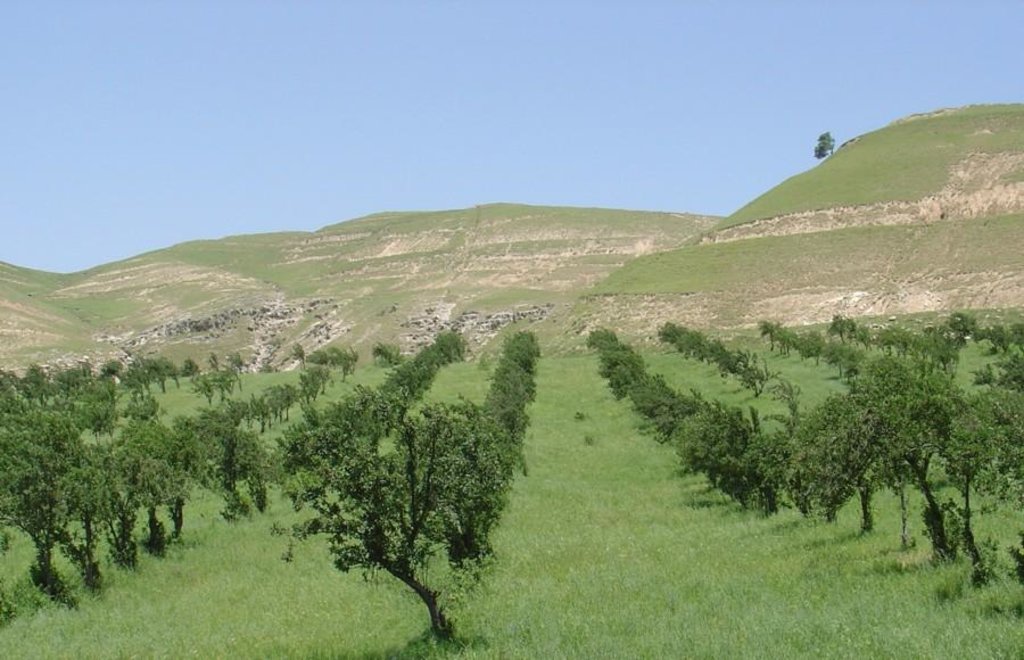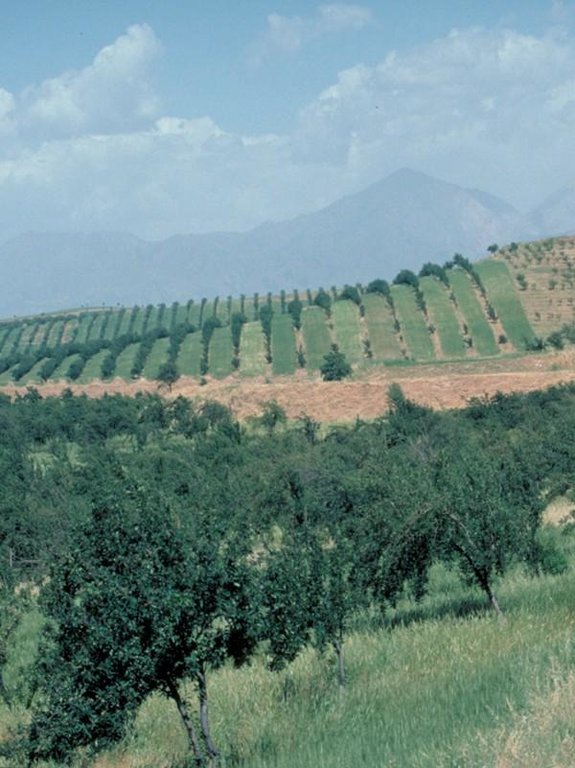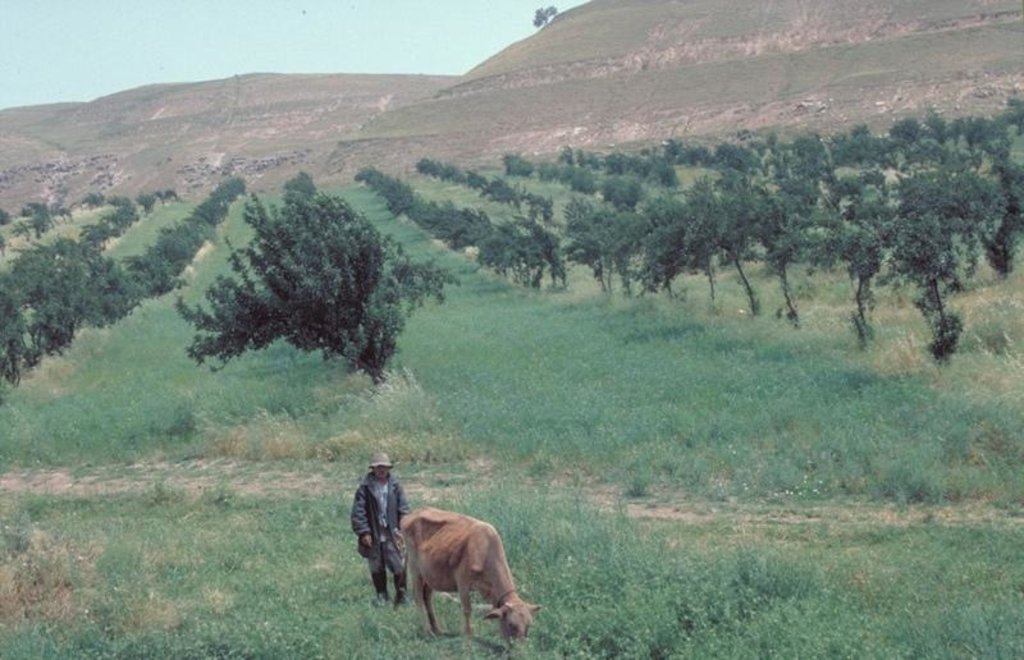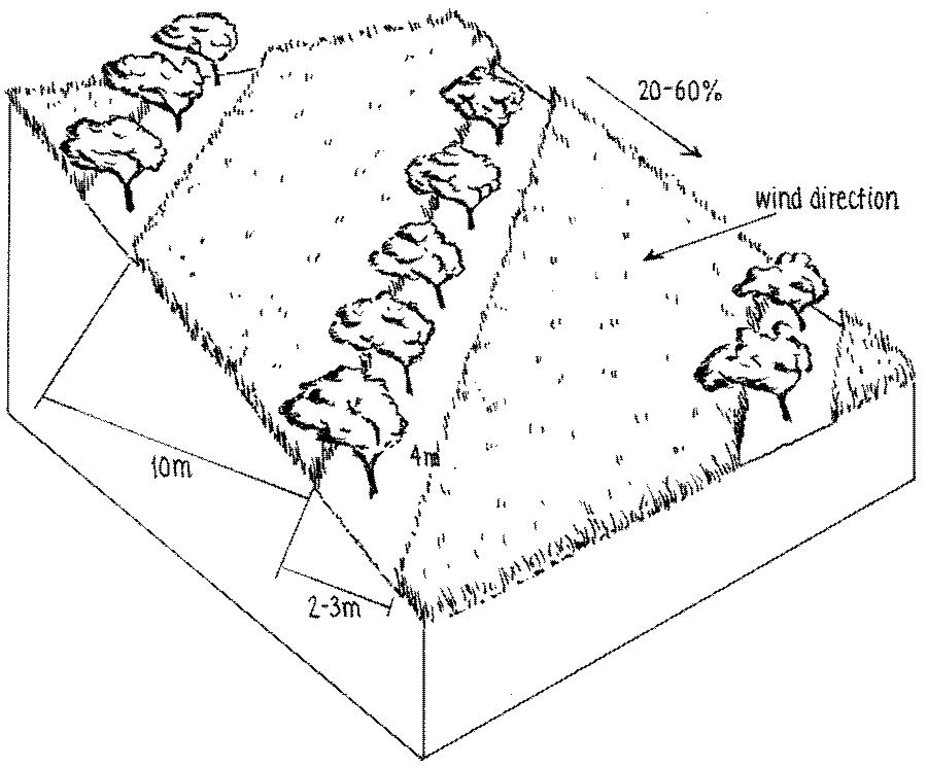Orchard-based agroforestry [Tayikistán]
- Creación:
- Actualización:
- Compilador: Loes Masselink
- Editor: –
- Revisor: David Streiff
technologies_1017 - Tayikistán
- Resumen completo en PDF
- Resumen completo en PDF para imprimir
- Resumen completo en el navegador
- Resumen completo (sin formato)
- Orchard-based agroforestry: 14 de agosto de 2019 (inactive)
- Orchard-based agroforestry: 2 de noviembre de 2021 (public)
- Orchard-based agroforestry: 4 de abril de 2018 (inactive)
- Orchard-based agroforestry: 19 de julio de 2017 (inactive)
- Orchard-based agroforestry: 17 de julio de 2017 (inactive)
- Orchard-based agroforestry: 17 de julio de 2017 (inactive)
- Orchard-based agroforestry: 17 de julio de 2017 (inactive)
- Orchard-based agroforestry: 9 de marzo de 2017 (inactive)
Visualizar secciones
Expandir todo Colapsar todos1. Información general
1.2 Detalles de contacto de las personas de referencia e instituciones involucradas en la evaluación y la documentación de la Tecnología
Especialista MST:
Nombre de la(s) institución(es) que facilitaron la documentación/ evaluación de la Tecnología (si fuera relevante)
CDE Centre for Development and Environment (CDE Centre for Development and Environment) - SuizaNombre de la(s) institución(es) que facilitaron la documentación/ evaluación de la Tecnología (si fuera relevante)
Soil Science Institute (Soil Science Institute) - Tayikistán1.3 Condiciones referidas al uso de datos documentados mediante WOCAT
¿Cuándo se compilaron los datos (en el campo)?
01/01/2004
El compilador y la/s persona(s) de referencia claves aceptan las condiciones acerca del uso de los datos documentados mediante WOCAT:
Sí
2. Descripción de la Tecnología MST
2.1 Breve descripción de la Tecnología
Definición de la Tecnología:
An agroforestry system where legumes and cereals are planted in fruit orchards, giving simultaneous production and conservation benefits.
2.2 Descripción detallada de la Tecnología
Descripción:
In the Faizabad region, Tajikistan, an area which is characterised by hilly topography, and deep but highly erodible loess soils, farmers traditionally cultivate beans and wheat in combination with fruit trees. This was a rather unsystematic agroforestry system, and during Soviet times (in the 1980s) fruit production was intensified. Pure-stand orchards were established: the land was levelled and on slopes exceeding 20%, terraces were constructed mechanically. The density of trees was increased, and the little space remaining between was used for hay production. Annual cropping was stopped.
Purpose of the Technology: After the Soviet era, farmers reduced the number of trees, allowing room for inter-cropping. They also established new orchards according to this same pattern. Those who farm rented land merely inter crop wheat, whereas the few farmers who own their land, rotate crops with two years of wheat, followed by one of legumes (beans or lucern). Crops are grown both for home consumption and sale.
Establishment / maintenance activities and inputs: The density of apples was reduced by expanding the spacing from approx 5 m to 10 m between rows, and from 2 m to 4 m within rows. Along each row of trees a 2-3 m strip of grass was left to grow. The layout of fruit trees in lines is a compromise between being along the contour, and against the prevailing wind. After harvesting of the fruit, between August and October, farmers sow their annual crops.
Natural / human environment: This agroforestry system provides protection against strong winds, heavy rains and flooding. Soil erosion (by water) has been reduced due to improved soil cover by the inter cropping, and through leaf litter, which is left to decompose on the ground. Furthermore, after harvesting, about three quarters of the crop residues are left on the field as mulch. The remainder is used as fodder. Soil organic matter within the current agroforestry system is considerably higher than in the surrounding grazing areas. Soil fertility has improved also: beans can fix 60-80 kg/ha/year of nitrogen. Compared with other crops, wheat provides the best erosion protection. Since the lateral rooting system of the apple trees reaches only 1-1.5 m from the trunk, competition for nutrients is not a major problem. Neither is there a problem with shade, since during the crop establishment period the trees have lose their leaves. In order to increase production, farmers plan to apply supplementary irrigation where possible.
2.3 Fotografías de la Tecnología
2.5 País/ región/ lugares donde la Tecnología fue aplicada y que se hallan comprendidos por esta evaluación
País:
Tayikistán
Región/ Estado/ Provincia:
Tajikistan, Faizabad
Especifique más el lugar :
Faizabad
Map
×2.6 Fecha de la implementación
Si no se conoce el año preciso, indique la fecha aproximada:
- 10-50 años atrás
2.7 Introducción de la Tecnología
Especifique cómo se introdujo la Tecnología:
- mediante la innovación de usuarios de tierras
3. Clasificación de la Tecnología MST
3.1 Propósito(s) principal(es) de la Tecnología MST
- reducir, prevenir, restaurar la degradación de la tierra
3.2 Tipo(s) actuales de uso de la tierra donde se aplica la Tecnología

Cultivos asociados (cultivos/ pastoreo/ árboles), incl. agroforestería
- Agroforestería
Principales productos/ servicios:
major cash crop: apples, wheat, beans
major food crop: apples, wheat, beans
Comentarios:
Major land use problems (compiler’s opinion): Most of the rains fall in late autumn and early spring, and the rains coincide with very strong winds. The topsoil is therefore exposed to erosion during this period if left uncovered, and without a windbreak. A particular problem during the soviet period was that the intensive orchard system meant annual food crops were left out of the production system: soil cover was reduced and there was less food.
Type of cropping system and major crops comments: two years of wheat followed by one of legumes (beans or lucerne)
3.3 Información adicional sobre el uso de tierras
Provisión de agua para la tierra donde se aplica la Tecnología:
- de secano
Número de temporadas de cultivo por año:
- 2
Especifique:
Longest growing period in days: 270Longest growing period from month to month: October-JuneSecond longest growing period in days: 270Second longest growing period from month to month: November-July
3.4 Grupo MST al que pertenece la Tecnología
- agroforestería
- rompevientos/ cinturones de protección
- cobertura de suelo/ vegetal mejorada
3.5 Difusión de la Tecnología
Comentarios:
Total area covered by the SLM Technology is 45 m2.
3.6 Medidas MST que componen la Tecnología

medidas agronómicas
- A2: materia orgánica/ fertilidad del suelo
- A6: Otros

medidas vegetativas
- V1: Cubierta de árboles y arbustos
- V2: Pastos y plantas herbáceas perennes

medidas estructurales
- S1: Terrazas
Comentarios:
Main measures: agronomic measures, vegetative measures, structural measures
Type of agronomic measures: mulching, rotations / fallows
Type of vegetative measures: aligned: -against wind
3.7 Principales tipos de degradación de la tierra encarados con la Tecnología

erosión de suelos por agua
- Wt: pérdida de capa arable/ erosión de la superficie
- Wg: erosión en cárcavas

erosión de suelos por viento
- Et: pérdida de capa arable

deterioro químico del suelo
- Cn: reducción de la fertilidad y contenido reducido de la materia orgánica del suelo (no ocasionados por la erosión)
Comentarios:
Main type of degradation addressed: Wt: loss of topsoil / surface erosion, Wg: gully erosion / gullying, Et: loss of topsoil, Cn: fertility decline and reduced organic matter content
Main causes of degradation: other human induced causes (specify) (The suplementary irrigation system could not be maintained after state farms stopped recieving government support. Thus, it became more interesting to increase crop production through intercropping.)
Secondary causes of degradation: governance / institutional (With the transformation of the planned economy to a market economy, for the state farm areas new forms of management had to be found.)
3.8 Prevención, reducción o restauración de la degradación de la tierra
Especifique la meta de la Tecnología con relación a la degradación de la tierra:
- prevenir la degradación de la tierra
Comentarios:
Main goals: prevention of land degradation
4. Especificaciones técnicas, actividades de implementación, insumos y costos
4.1 Dibujo técnico de la Tecnología
4.2 Especificaciones técnicas/ explicaciones del dibujo técnico
Fruit trees intercropped with wheat (or beans): note the fruit trees are aligned in a 'compromise' position between the direction of the prevailing wind and the slope.
Location: Faizabad. Faizabad, Tajikistan
Date: 25-07-2004
Technical knowledge required for field staff / advisors: moderate
Technical knowledge required for land users: moderate
Main technical functions: improvement of ground cover, increase in nutrient availability (supply, recycling,…), reduction in wind speed, improvement of soil fertility (with crop rotation incl. Beans+lucerne)
Secondary technical functions: control of concentrated runoff: retain / trap, reduction of slope angle, improvement of subsoil structure (hardpan), water harvesting / increase water supply, retain/trap concentrated runoff (prevention of gully erosion)
Mulching
Material/ species: leaf litter, crop residues
Rotations / fallows
Material/ species: wheat, legumes
Aligned: -against wind
Vegetative material: T : trees / shrubs, G : grass
Vertical interval between rows / strips / blocks (m): 2-6
Spacing between rows / strips / blocks (m): 10
Vertical interval within rows / strips / blocks (m): 4
Width within rows / strips / blocks (m): 2-3
Slope (which determines the spacing indicated above): 20-60%
terrace: forward sloping: earth
4.3 Información general sobre el cálculo de insumos y costos
Especifique la moneda usada para calcular costos:
- dólares americanos
4.4 Actividades de establecimiento
| Actividad | Tipo de medida | Momento | |
|---|---|---|---|
| 1. | Planting of fruit orchard | Vegetativas | |
| 2. | Thinning: doubling the spacing between trees (by farmers, after Soviet period) | Vegetativas | |
| 3. | Hand planting of fruit tree seedlings | Vegetativas | |
| 4. | planting fruit trees | Vegetativas | |
| 5. | 1. Levelling of steep land into terraces with graders | Estructurales | |
| 6. | Planting of fruit orchards | Estructurales |
4.5 Costos e insumos necesarios para el establecimiento
| Especifique insumo | Unidad | Cantidad | Costos por unidad | Costos totales por insumo | % de los costos cubiertos por los usuarios de las tierras | |
|---|---|---|---|---|---|---|
| Mano de obra | Planting of fruit orchard | ha | 1,0 | 60,0 | 60,0 | 100,0 |
| Mano de obra | Thinning and hand lanting | ha | 2,0 | 10,0 | 20,0 | 100,0 |
| Equipo | machine use | ha | 1,0 | 120,0 | 120,0 | 100,0 |
| Equipo | tools | 1,0 | 10,0 | 10,0 | 100,0 | |
| Material para plantas | seedlings | ha | 1,0 | 250,0 | 250,0 | |
| Fertilizantes y biocidas | fertilizer | ha | 1,0 | 50,0 | 50,0 | 100,0 |
| Fertilizantes y biocidas | biocides | ha | 1,0 | 30,0 | 30,0 | 100,0 |
| Fertilizantes y biocidas | pesticides | ha | 1,0 | 30,0 | 30,0 | 100,0 |
| Costos totales para establecer la Tecnología | 570,0 | |||||
4.6 Actividades de establecimiento/ recurrentes
| Actividad | Tipo de medida | Momento/ frequencia | |
|---|---|---|---|
| 1. | Applying organic manure for crops and trees | Agronómicas | (November to March) |
| 2. | Ploughing to depth of 25–30 cm for annual crops | Agronómicas | (November to March) |
| 3. | Disc ploughing and harrowing . | Agronómicas | (March) |
| 4. | Chemical fertiliser application to crops | Agronómicas | (once during season). |
| 5. | Pest management with chemicals | Agronómicas | (two-three times where possible/affordable) |
| 6. | harvesting: wheat is the only crop, which can be harverted if tractor and petrol is available | Agronómicas | |
| 7. | mulching trees (humus cover) | Agronómicas | |
| 8. | cutting trees | Agronómicas |
4.7 Costos e insumos necesarios para actividades de mantenimiento/ recurrentes (por año)
| Especifique insumo | Unidad | Cantidad | Costos por unidad | Costos totales por insumo | % de los costos cubiertos por los usuarios de las tierras | |
|---|---|---|---|---|---|---|
| Mano de obra | applying organic manure for crops and trees | ha | 1,0 | 45,0 | 45,0 | 100,0 |
| Mano de obra | ploughing | ha | 2,0 | 10,0 | 20,0 | 100,0 |
| Equipo | labour animal traction | ha | 1,0 | 10,0 | 10,0 | 100,0 |
| Equipo | labour harvesting | ha | 1,0 | 100,0 | ||
| Equipo | labour mulching and cutting | ha | 1,0 | 50,0 | 50,0 | 100,0 |
| Material para plantas | seeds | ha | 1,0 | 30,0 | 30,0 | 100,0 |
| Fertilizantes y biocidas | fertilizer | ha | 1,0 | 50,0 | 50,0 | 100,0 |
| Fertilizantes y biocidas | biocides | ha | 1,0 | 5,0 | 5,0 | 100,0 |
| Fertilizantes y biocidas | compost manure | ha | 1,0 | 10,0 | 10,0 | 100,0 |
| Indique los costos totales para mantenecer la Tecnología | 220,0 | |||||
Comentarios:
Cost calculation refers to farmers who established new agroforestry plots (without receiving any incentives). These are farmers who have rented land from state farms. However, conversion of Soviet orchards is more common than the establishment of new agroforestry plots (information on costs not available).
5. Entorno natural y humano
5.1 Clima
Lluvia anual
- < 250 mm
- 251-500 mm
- 501-750 mm
- 751-1,000 mm
- 1,001-1,500 mm
- 1,501-2,000 mm
- 2,001-3,000 mm
- 3,001-4,000 mm
- > 4,000 mm
Zona agroclimática
- semi-árida
Thermal climate class: temperate
5.2 Topografía
Pendientes en promedio:
- plana (0-2 %)
- ligera (3-5%)
- moderada (6-10%)
- ondulada (11-15%)
- accidentada (16-30%)
- empinada (31-60%)
- muy empinada (>60%)
Formaciones telúricas:
- meseta/ planicies
- cordilleras
- laderas montañosas
- laderas de cerro
- pies de monte
- fondo del valle
Zona altitudinal:
- 0-100 m s.n.m.
- 101-500 m s.n.m.
- 501-1,000 m s.n.m
- 1,001-1,500 m s.n.m
- 1,501-2,000 m s.n.m
- 2,001-2,500 m s.n.m
- 2,501-3,000 m s.n.m
- 3,001-4,000 m s.n.m
- > 4,000 m s.n.m
Indique si la Tecnología se aplica específicamente en:
- no relevante
Comentarios y especificaciones adicionales sobre topografía :
Landforms also mountain slopes.
5.3 Suelos
Profundidad promedio del suelo:
- muy superficial (0-20 cm)
- superficial (21-50 cm)
- moderadamente profunda (51-80 cm)
- profunda (81-120 cm)
- muy profunda (>120 cm)
Textura del suelo (capa arable):
- mediana (limosa)
Materia orgánica de capa arable:
- baja (<1%)
Si se halla disponible, adjunte una descripción completa de los suelos o especifique la información disponible, por ej., tipo de suelo, pH/ acidez de suelo, capacidad de intercambio catiónico, nitrógeno, salinidad, etc. :
Soil fertility: low
Soil drainage / infiltration: good
Soil water storage capacity: medium
5.4 Disponibilidad y calidad de agua
Agua subterránea:
< 5 m
Disponibilidad de aguas superficiales:
pobre/ ninguna
Calidad de agua (sin tratar):
agua potable de buena calidad
5.5 Biodiversidad
Diversidad de especies:
- elevada
5.6 Las características de los usuarios de la tierra que aplican la Tecnología
Orientación del mercado del sistema de producción:
- mixta (subsistencia/ comercial)
Ingresos no agrarios:
- > 50% de todo el ingreso
Nivel de mecanización:
- trabajo manual
- mecanizado/motorizado
Indique otras características relevantes de los usuarios de las tierras:
Off-farm income specification: trade and business; young men often migrate to Russia (seasonally or for several years) to search for jobs
Level of mechanization manual work: pruning of trees, harvesting, applying herbizids
Level of mechanization animal traction: ploughing if no fuel for tractors is available
Level of mechanization mechanized/motorized: Disc ploughing and harrowing, if petrol is available
5.7 Área promedio de la tierra que pertenece a o es arrendada por usuarios de tierra que aplican la Tecnología
- < 0.5 ha
- 0.5-1 ha
- 1-2 ha
- 2-5 ha
- 5-15 ha
- 15-50 ha
- 50-100 ha
- 100-500 ha
- 500-1,000 ha
- 1,000-10,000 ha
- > 10,000 ha
¿Esto se considera de pequeña, mediana o gran escala (refiriéndose al contexto local)?
- pequeña escala
Comentarios:
Average area of land owned or leased by land users applying the Technology also 2-5 ha
5.8 Tenencia de tierra, uso de tierra y derechos de uso de agua
Tenencia de tierra:
- estado
Derechos de uso de tierra:
- arrendamiento
5.9 Acceso a servicios e infraestructura
salud:
- pobre
- moderado
- bueno
educación:
- pobre
- moderado
- bueno
asistencia técnica:
- pobre
- moderado
- bueno
energía:
- pobre
- moderado
- bueno
caminos y transporte:
- pobre
- moderado
- bueno
6. Impactos y comentarios para concluir
6.1 Impactos in situ demostrados por la Tecnología
Impactos socioeconómicos
Producción
producción de cultivo
producción de forraje
producción de madera
Ingreso y costos
ingreso agrario
Otros impactos socioeconómicos
trees hinder farm operations
Comentarios/ especifique:
difficult to apply pesticides using machinery and pesticides are very expensive.
Pruning is important, but farmers are new to the system and don’t always have the skills required
Impactos socioculturales
instituciones comunitarias
mitigación de conflicto
Impactos ecológicos
Ciclo de agua/ escurrimiento de sedimento
drenaje de agua en exceso
Suelo
humedad del suelo
cubierta del suelo
pérdida de suelo
materia orgánica debajo del suelo C
Reducción de riesgos de desastres y riesgos climáticos
velocidad de viento
Otros impactos ecológicos
nutrient use efficiency
water use efficiency
soil fertility
Comentarios/ especifique:
Also biodiversity enhancement is medium (20-50%)
6.2 Impactos fuera del sitio demostrados por la Tecnología
corriente confiable y estable fluye en estación seca
inundaciones río abajo
colmatación río abajo
contaminación de aguas subterráneas/ de ríos
sedimentos transportados por el viento
6.4 Análisis costo-beneficio
¿Cómo se comparan los beneficios con los costos de establecimiento (desde la perspectiva de los usuarios de tierra)?
Ingresos a corto plazo:
positivo
Ingresos a largo plazo:
muy positivo
¿Cómo se comparan los beneficios con los costos de mantenimiento/ recurrentes (desde la perspectiva de los usuarios de tierra)?
Ingresos a corto plazo:
muy positivo
Ingresos a largo plazo:
muy positivo
6.5 Adopción de la Tecnología
- 10-50%
Si tiene la información disponible, cuantifique (número de hogares y/o área cubierta):
3500 land user families have adopted the Technology without any external material support in an area of 45 km^2
De todos quienes adoptaron la Tecnología, ¿cuántos lo hicieron espontáneamente, es decir, sin recibir incentivos/ pagos materiales?
- 90-100%
Comentarios:
3500 land user families have adopted the Technology without any external material support
There is a strong trend towards spontaneous adoption of the Technology
Comments on adoption trend: Adoption rate is high: 3,500 households in the region, who rented the orchards, have converted them themselvs without any incentives.
6.7 Fuerzas/ ventajas/ oportunidades de la Tecnología
| Fuerzas/ ventajas/ oportunidades desde la perspectiva del compilador o de otra persona de referencia clave |
|---|
|
Easy to convert orchards How can they be sustained / enhanced? Land reform from state to private ownership would assist the process and strengthen farmers' associations. |
| Helps provide employment (mainly self- employment, partial employment of additional labourers) and increased self-sufficiency. With the cultivation of wheat, some farmers can solve their food problems and do not need an off-farm income. |
|
Improvement of soil fertility and soil organic matter content How can they be sustained / enhanced? Use all the crop residue and leaves of trees as cover (mulch). |
|
Considerable reduction of soil erosion How can they be sustained / enhanced? Adopt cover crop and rotate with other legumes and minimum tillage system. |
|
Wider spacing between the rows of trees (to 10 m) is best for the agroforestry How can they be sustained / enhanced? Remaining orchards with the original Soviet spacing of 5m between the rows should be thinned. |
6.8 Debilidades/ desventajas/ riesgos de la Tecnología y formas de sobreponerse a ellos
| Debilidades/ desventajas/ riesgos desde la perspectiva del compilador o de otra persona de referencia clave | ¿Cómo sobreponerse a ellas? |
|---|---|
| The irrigation system established during Soviet times required high maintenance inputs due to siltation of the canals. During the period of the civil war systems ceased to function, the canals filled up with sediments and finally overflowed during rain storms causing gully formation | Control of water flow within the orchard using cutoff drains and drainage ditches. |
| Lines of trees which are planted up and down the slope to provide wind. | Compromise in layout design (see description). |
| Orchards managed by state farms are often not well looked after. | Leasing of land and awarding landholder certificates leads to improved orchard management. |
7. Referencias y vínculos
7.3 Vínculos a la información relevante disponible en línea
Título/ descripción:
Loes Masselink. 2012. Monitoring SLM Practices in Tajikistan. BSc thesis, Land Degradation and Development Group, International Land and Water Management at Wageningen University. The Netherlands.
URL:
https://www.wocat.net/fileadmin/user_upload/documents/Theses/Masselink2012.pdf
Vínculos y módulos
Expandir todo Colapsar todosVínculos
No hay vínculos
Módulos
No se hallaron módulos







